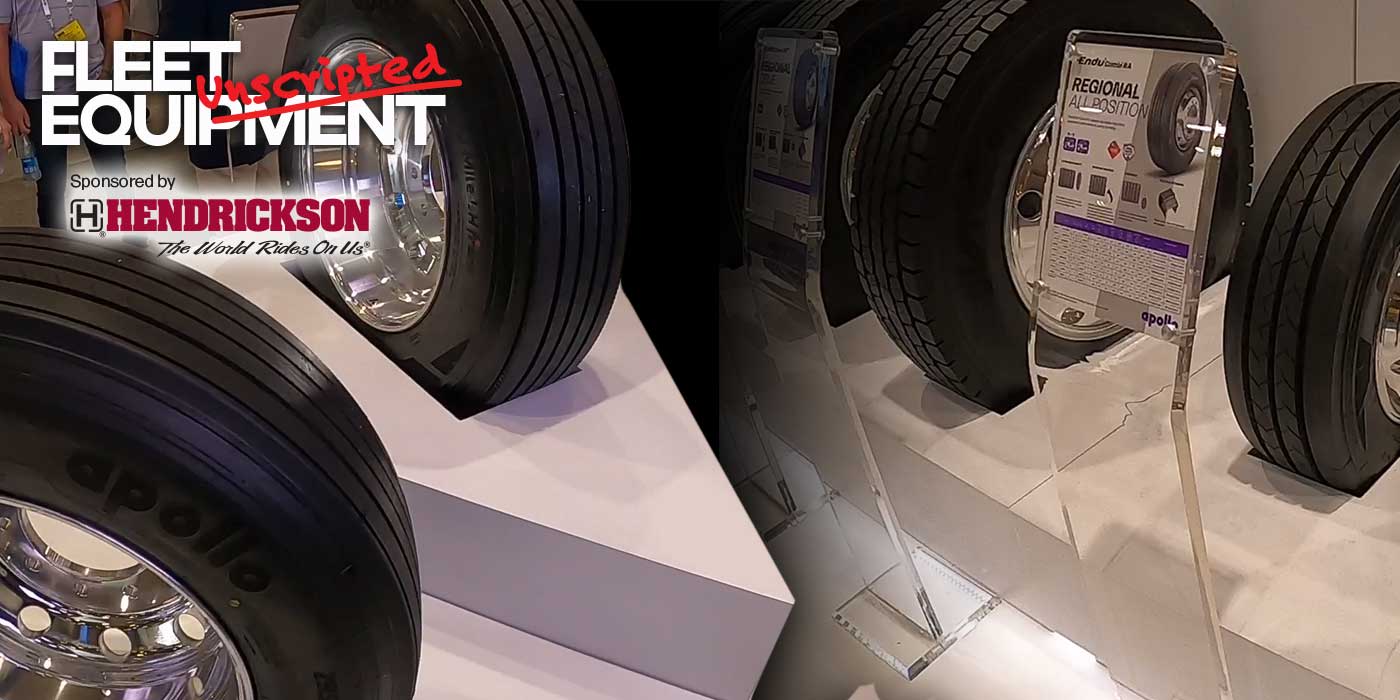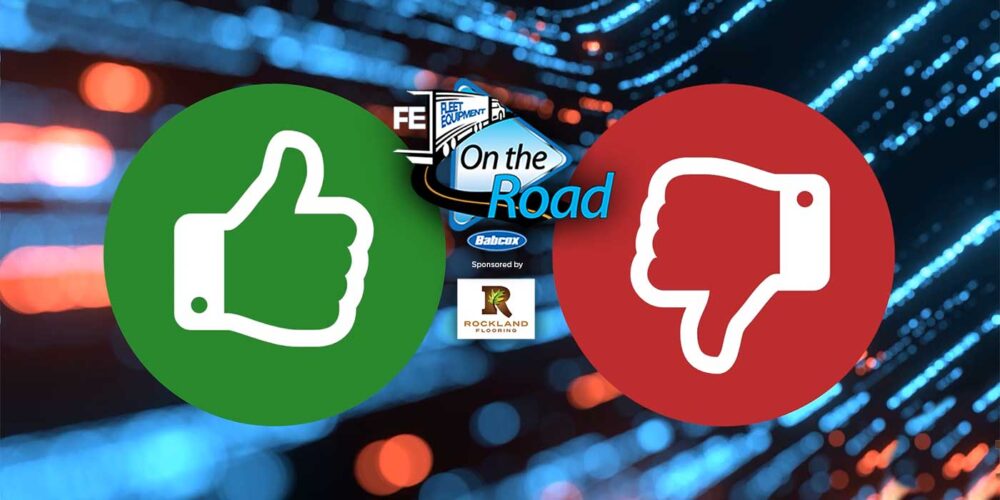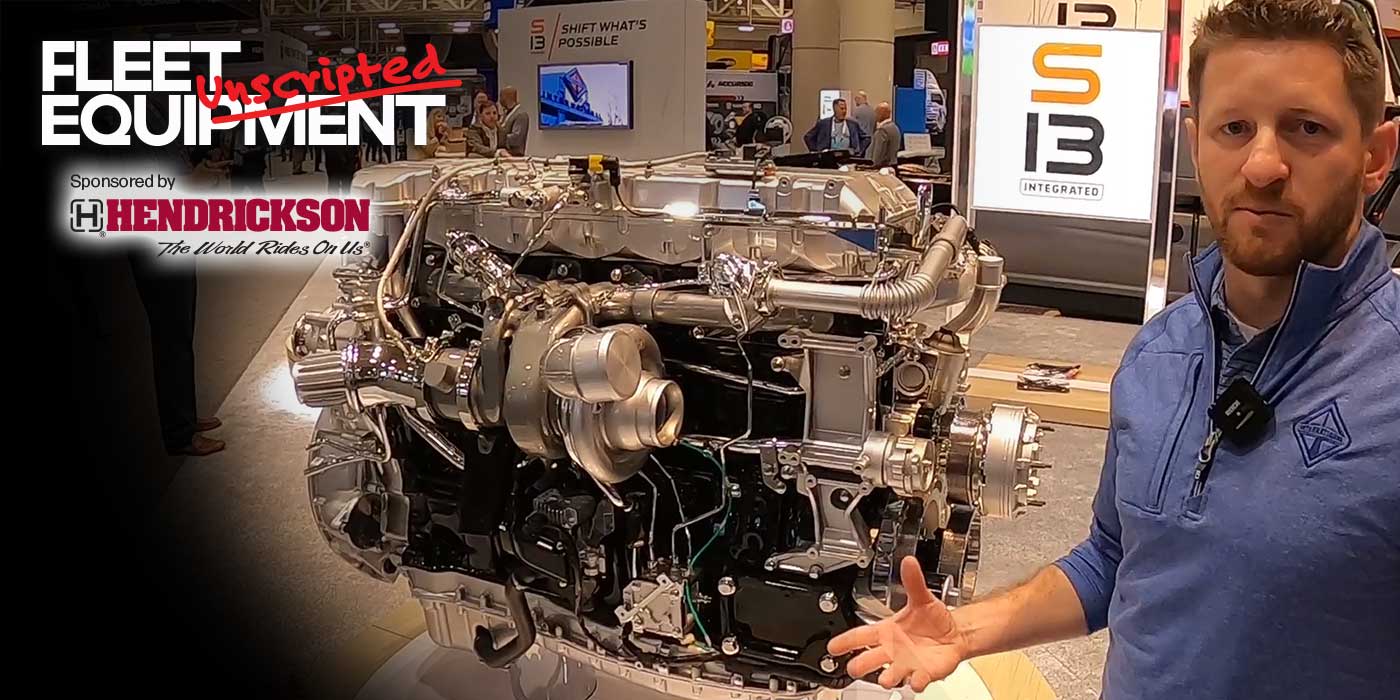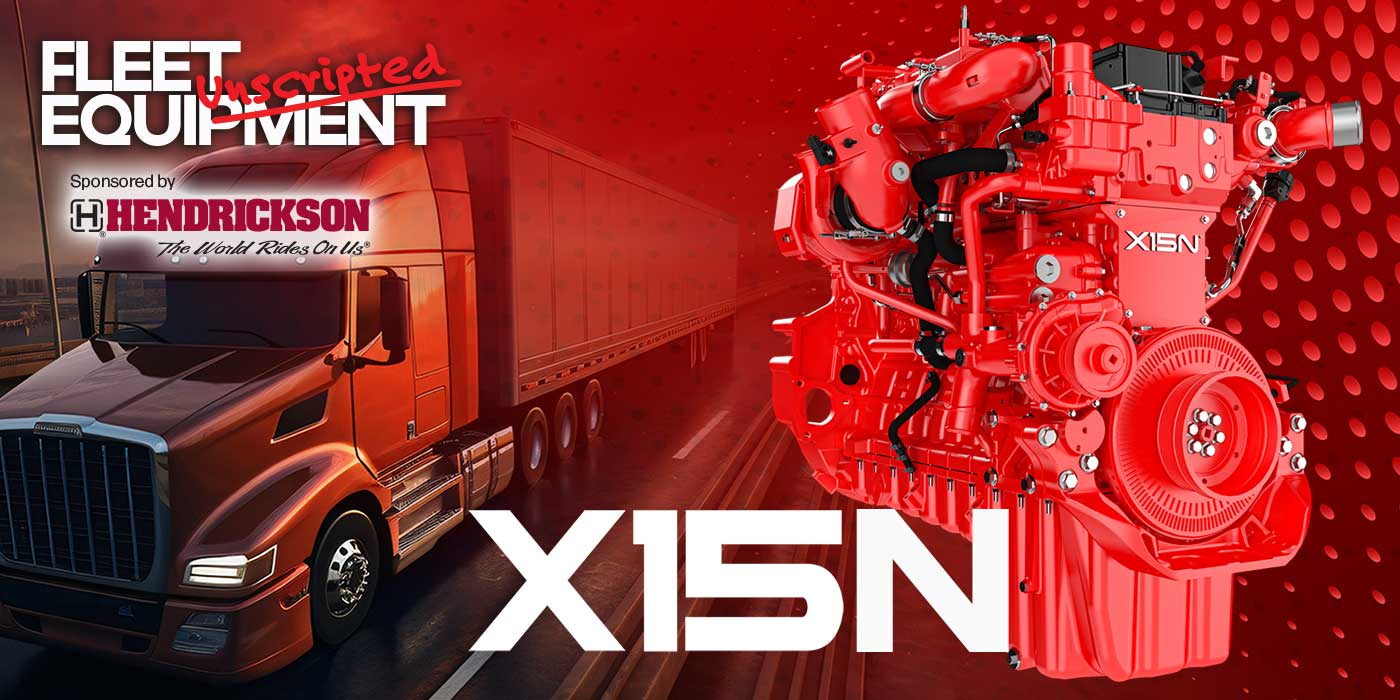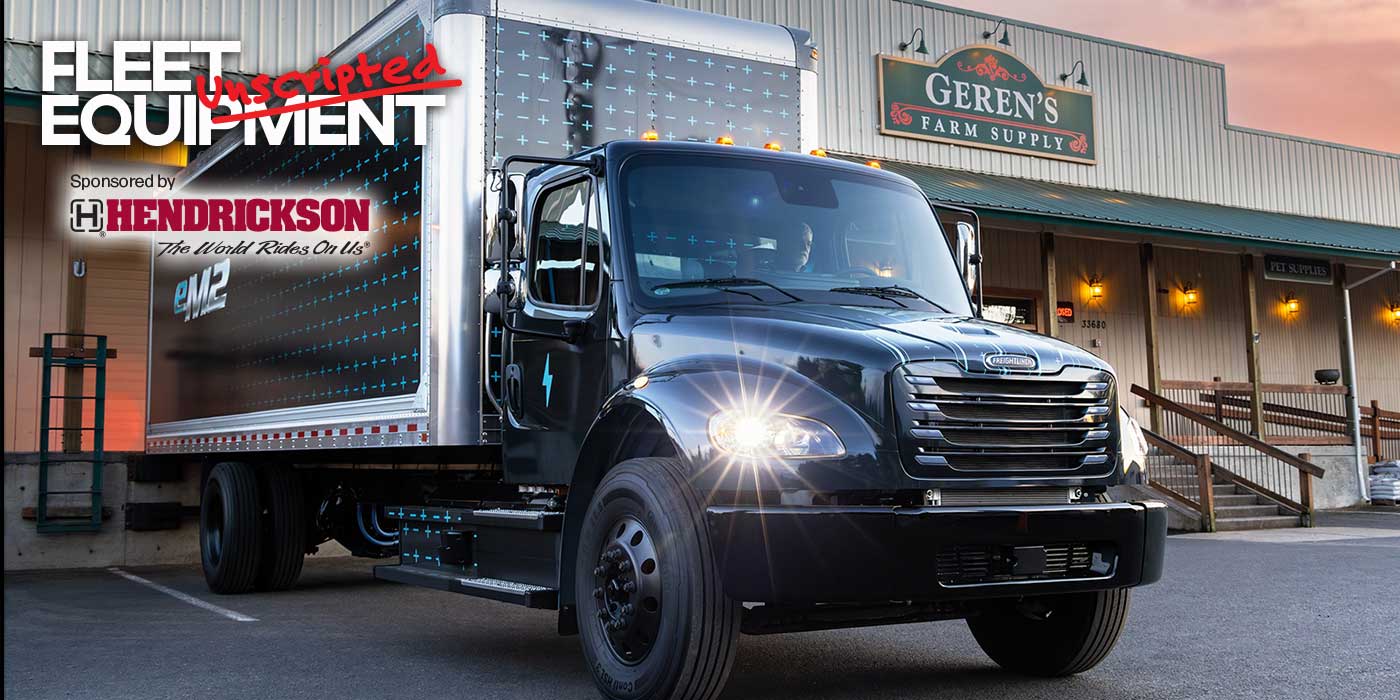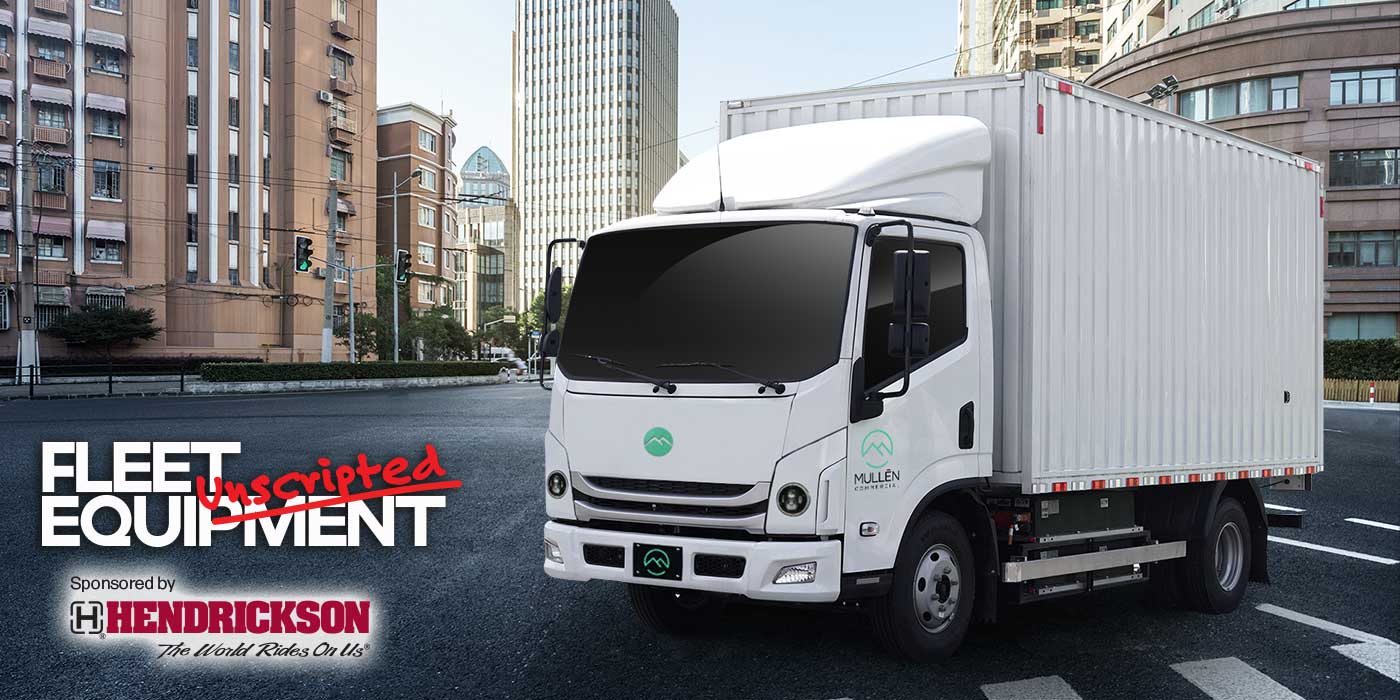For some of you, it’s already too late. AT&T shutdown its 3G network late last month and for those fleets who use that network and hadn’t updated your telematics devices, when you rolled into the office and opened up your dashboards you likely saw … nothing. It likely even impacted your ELD reporting. Frankly, it’s a ****storm those fleets are probably still dealing with.
Let this be a cautionary tale for the rest of the fleets that haven’t upgraded to 4G LTE telematics devices.
Here at FE, we’ve talked a lot about the 3G sunset. AT&T may have been the first to pull the plug on older devices, but Verizon and T-Mobile networks aren’t far beyond. If you still have connectivity to your devices, but haven’t upgraded–you have to start right now.
While tractors get a lot of the telematics attention, let’s not forget that trailers and other assets that you’re tracking with older devices will need updated too. That was an often overlooked topic of 3G sunset conversation that came up when I talked with, Andrew Rossington, chief product officer, Teletrac Navman. Watch the video above for all of his insight.

No script? No plan? No problem. Welcome to Fleet Equipment Unscripted—the video interview series that connects you with the greatest minds in the heavy-duty trucking world.
Bookmark the Fleet Equipment Unscripted page to catch all of our Unscripted episodes, and subscribe to our newsletter by clicking here to have the latest news and in-depth trucking stories delivered straight to your inbox.
Fleet Equipment Unscripted is sponsored by Hendrickson.
Here’s a transcript of the conversation
Jason Morgan: Hi everyone. I’m Jason Morgan content director for fleet equipment, and welcome to fleet equipment unscripted. Today, we’re talking with Andrew Rossington, chief product officer for Teletrac Navman. Andrew, thanks for taking the time to connect with us.
Andrew Rossington: Morning. Nice to meet you. Nice to be here.
Jason Morgan: Good to see you. We had talked earlier. I mean, that’s wild. I’m in Ohio, you’re in Australia. The magic of technology brings us together.
We are going to jump in and talk about the 3G sunset for the trucking industry. We have talked a lot about this and I’m sure you have talked a lot about this. In fact, I’m sure you’re probably tired of talking about this. This is important if you’re one of the fleets out there that has not a upgraded your Telemax devices, where you’ve pushed the procrastination, I think to, as far as we can push it at this level. We are here, the 3G sunset is upon us. So let’s just kick it off there. If there’s a fleet, and there are many more than we’d like to admit, that hasn’t upgraded to 4G LTE telematics device technology at this point, where are they going to start seeing the consequences of not having done that upgrade?
Andrew Rossington: As you said before, the curtain closed so to speak and it’s over for those, on the AT&T network at this point in time. I think there’s, there’s no backing down for anyone now. If you haven’t done something, I think you’re in trouble immediately.
Jason Morgan: What kind of functionality is this just mean? I just will not see my trucks operate, it’s off? I won’t see anything. So I’m going to open up my dashboard and just have kind of one of the “Oh, bleep,” moments, right?
Andrew Rossington: Yeah. Great question. I think you did right. You opened up your dashboard and the lights will be off, so to speak. So you will lose all communications to that vehicle or that asset or that piece of equipment. And I think the important thing is it’s not just about which we’ve talked about in the past. It’s not just about the tractor itself. It’s about lots of other pieces of equipment to get affected. But yes, in answer your question, the lights will be out and there will be no visibility, there will be no services of any description from those vehicles or those assets.
Jason Morgan: Great. And to your point, it varies by network right now AT&T has, has put their sunset in place. We know it’s coming from Verizon and others and so forth. Again for fleet managers, even if you see your trucks and haven’t upgraded, you’re like, “Oh, well it’s not me.” It will be very soon. So with that in mind, we know upgrades are important. We also know that they can take a while. It can take some time. So do you have any tips here for us, for what’s a smooth rollout of new telematics hardware look like and any tips to make this process just as painless as possible for fleets that are having to do it basically now, as the clock strikes midnight.
Andrew Rossington: Yeah, I think it’s always been about planning, hasn’t it? I think, the choices for people. Let’s think about this. There’s two different types of people. Now. There’s the people that have got another arguably three months, four months to think about this, for the people that are closing down mid-year and then you’ve got Verizon by the end of the year. So, so there’s still planning time now for, for those, for those operators that haven’t done anything. I think the ones that wake up tomorrow morning, so to speak though, I think this is down to trying to talk to your telematics operator and see whether they’re going to be able to help you. Because as you’d imagine, there is hopefully a smaller percentage of operators that are sitting here at the moment. You haven’t done anything, but yeah, as, as I mentioned before, I think it’s not just restricted to the tractor or the vehicle itself. So I think that’s where the surprises are potentially going to come in tomorrow when suddenly the trailers disappear off the maps or a sensory based device, doing some sort of metering or remote metering or something that will just disappear. And I think that’s where some of the surprises are going to come from.
Jason Morgan: Oh. And, and that’s really interesting too, because even for fleets that may have thought they’ve upgraded, what you’re saying is maybe they haven’t thought of… I mean, you mentioned even the sensory thing, like oil tanks, right? If I got bulk oil tanks and I’ve got a sensor in there reporting how much oil I have in there. Yeah. I guess, I wouldn’t know until I go to actually check that it’s not like the trucks were on there every day. That’s an interesting point.
Andrew Rossington: Yeah. And they tend to report in a little less frequently and some of them only in when something occurs. So, to some companies, they may not be the most visible thing, day to day anyway. So they may have missed them. So we’ve spent a lot of time as a company going to our customers trying to talk to them, as you can imagine, over the last 12 months, two years, but certainly in the last six months and a lot of conversations, particularly about those non-track devices as well.
Jason Morgan: Oh, interesting. Okay. So it’s, and it’s been pretty clear, you got to roll on the trader site, you got to roll that into the service bay or even just site visit wherever you’re going to go to update that. But how’s the process for some of those overlooked assets? The trailers, the bulk containers, that kind of thing. Are there any differences in how you go about rolling out those updates that maybe fleets need to consider versus what they might know on the tractor side?
Andrew Rossington: Yeah, I think so. There’s been a lot of tech technology changes over the past couple of years and particularly around battery powered devices as well. So, historically things were very power oriented and battery devices weren’t very good. If we think about those remote devices, if we think about trailer trackers, these days have got 15 plus year lifespans on them often longer than the network that’s supporting the device. So obviously now is that there is capabilities to put long life battery based trackers on there. So I guess coming back to your question, you asked before, what have people got to do? Well, I think the impact is a bit less for them now. So devices can be shipped out to these customers in working order and connected very quickly, self installed by the customers themselves to get those trailers or assets back online. I think when it comes to [inaudible 00:06:58] itself, obviously again, that’s really a planning and talking to your telematics provider to see, see how quickly they’re going to be able to help you.
Jason Morgan: Right. Well and even that kind of idea, of even putting that on a checklist, right? You mentioned trailers. And trailers also tend to sit, and maybe you don’t need to pull the trailer right now to update the device, but you definitely need the device on site so that, the next time you go through these trailers, we know that we need this number updated, go ahead and put this on the pre-trip trailer inspection so that we know it’s going to happen. Right?
Andrew Rossington: Yep. And here’s the irony I said tomorrow, you won’t be able to find those trailers. So there’s the ironies of it all, but…(laughs)
Jason Morgan: Ah, yes. Good point. I wanted to [crosstalk 00:07:49] you have no idea where the trailers are. Ah, the layers of this are terrible. Huh? I mean, that’s right. And, and how much you take, you take it for granted. I mean, even considering the tractor side, we all saw the push to the ELD functionality. And if you have that integrated with your telematics device, well, now you’ve got a problem because you need to be able to report on your ELDs, that’s, mission critical. And I know that it’s kind of tongue in cheek when you say that the trailers can outlive some of the networks that are up, which actually is really pretty true, but I mean the LTE part, right? I believe that stands for long term evolution. You see that being a real, is this something we’re going to have to do still again? Is LTE also just kind of a LTE for now? Or does this have further of functionality then? It seems like we just went through 2G not too long ago. Now we’re going through 3G from your view, is LTE a longer life cycle potentially?
Andrew Rossington: Oh look, I think so. 3G, I think we probably all forget sometimes, 3G was commercially available in about 2002, depending on your carrier and your country give or take, it was around about that time. So if you think about it, we’re in 2022 now. So we’ve had a pretty good run for 3G.
4G is, let’s call it 2010, 2012 vintage each depending on again, what country, what carrier and LTE came after that, as you know, often people will describe it as the the iPhone S. So it’s an iteration rather than a generation on the network. So I think we’ve got a good life ahead of us on that. And 5G is still very new and for the most people cost prohibitive for employment across all of their services and we talk about coverage, et cetera. But I think, as we’re seeing literally quarter on quarter, that price is coming down. But I think we’ve got a good life ahead of us on 4G. 4G does a lot of what let’s call it the basic applications need to do so outside of autonomous vehicles and instant videos and all of those sort instant telemetry, all those kind of things. 4G does a great job and I think it’ll continue to do so. And it’s so well known and understood. And if you think about the price point of it now, it is very low cost. So I think we’ve probably got a good life ahead of us, probably similar potentially to what we had in the life span of 3G.
Jason Morgan: Very cool. Yeah. And I mean that, there’s kind of a double edged sword here because, at least some of the cliche, which is actually becoming more true of the truck being a rolling cell phone. If you had to go back to a 3G phone, you would throw it against the wall and get it fixed like immediately. So what, I mean, you’ve alluded to it a little bit here, just to reiterate, what are some of the functionality that 4G LTE brings to the table? In addition to just knowing where my equipment is, being able to see it again and making sure I’m upgraded, what additional features make these upgrades worth the squeeze here?
Andrew Rossington: Yeah. I think, apart from, as you said, the very basics of being able to communicate again, it brings, it brings bandwidth and reduced latency. So response times, if you like, it brings that to the table. So, if you think about it on a commercial level, apps like, your Snapchats and your Ubers and things like that, they became a applicable and able to be used in the sort of, 2012, ’13, ’14 timeframes. So it was combining video with kind of real time mapping and all of those types of things that we expect to get. So it gave us higher bandwidth and it gives, gave us reduced latency or yeah, as we said, a better response time to that data. So they’re the kind of applications. And if you think about those now rolling forward to a transport company in 2022, it’s about a lot of those same things.
Thinking about it from a transport point of view, it’s about turn by turn navigation. It’s about route guidance. It’s about extracting information off the vehicle quickly. So we think about where video telematics is at now and retrieving footage off vehicles, it’s all capable in the, in the 4G model. The masses of data that we actually pull off vehicles now from their engine management system, as we said to cameras, to location, to ELD information from the driver. And there’s a lot of information and 4G is allowing us to get that information now and process it, on the back end, using the telematics platforms and newer AI based tools that are currently coming into play as well.
Jason Morgan: Right. I mean, the video telematics. Though, I have to go back, though, I loved the Uber example there, because I think it’s something that we can all connect with where you sit there and you just watch. Is the guy going to show you his… Is he there say, “Oh, he is moved around. I can see him?” That on the transportation side, it can move the camp conversation for fleet from, where my truck was to where my truck is. Right. This is where it is. It’s right here. It’s one turn away, that kind of thing. But going back to the video, first of all, thank you for being on the front lines of the technology. People like you just immediately take for granted instantly, right? To your point, you moved those videos around so quickly and analyze them so quickly that, yeah, we forget that it necessitates this kind of heavy lifting on the fleets part to upgrade my device, to be able to take advantage of that kind of stuff.
Andrew Rossington: Yeah. I think we do take it for granted, but I like your point about it history versus real time. And I think where are we going next? It’s all about predictability that’s coming next, isn’t it? It’s great to look back and see what happened. And it’s really good to see now what is happening. And I think the next bit is what’s going to happen. And I think that’s where the power is going to come for, from now. Not just because of 5G, because of the advancements in telematics generally and the advancements in AI and more processing power that we are going to see.
So, I think, as sort of an adjunct to that, I was talking to a customer the other day and they’re sort of like, “Oh, we’ll get to this 3G, 4G thing when we need to.” And I said, “Well, that’s the obvious thing here. You’ve got drivers running on the ELD program?
“Oh, yes, we do.”
“Well, what are you going to do about those? Do you run any big customer contracts, where you have some KPIs to deliver to them around service? Do you have customer service tools?” They’re all going to go. So all of that, both real time and historical information is about to disappear from them tomorrow. So I think that’s going to be some of the consequences that people are going to see. So maybe a little bit removed from what you were talking about before, but I think that concept of real time information, is going to disappear for some tomorrow.
Jason Morgan: I think your point is well taken too. And it relates to what we were talking about here of the breadth of information you’re pulling off of the assets and using them in such dynamic ways that, again, going back to the, I take technology for granted every day. Yeah. And when it doesn’t work, it is just like an immediate problem that needs fixed and it’s the worst when, I mean, even on the basics I still call my IT director and he still tells me, “Well, did you try restarting?” And I was like, “You know what? I should probably do that before I call, huh. I should probably do these kind of things.” I should probably upgrade, because, well, you don’t want those calls on that day too, of saying “What is this?” He’s like, “Well, sir, you didn’t do your upgrades.” And it’s like, “Oh yeah, I guess that’s my fault.” So I mean the point here, reach out, right? That’s why I’m glad to connect with you and talk about this. All fleets have to do is just call their providers. You will help walk us through this, right?
Andrew Rossington: Yes. Yeah. Look, I think we talk about tomorrow with the people who are going to be in trouble when they wake up and see no services, but back to what we said before. I think in terms of, if you’ve got a telematics provider that has up-to-date equipment and understands what’s going on here, there’s probably options to get people by, as we talked about battery power type equipment, things like that, which might plug the hole for a month or two, whilst the truck goes through a refit of some more permanent equipment and then deploy those battery devices out to trailers and things like that. So there’s certainly paths forward, but yeah, it’s going to be an exciting day, some would liken it to the Y2K, the armagedonish kind of things that are going on. I don’t think it’s quite that bad by the way.
Jason Morgan: No. For sure. And then, I mean, the nice thing is it’s, I mean, that’s also why we’re here, it’s completely in our control at this point. Just need to reach that note. Telematics service providers ready to help. They want to help. We just have to open those lines of communication. Andrew, I appreciate you opening this line of communication. This has been wonderful. It’s been great time. I’m sure. I’ll talk to you again soon.
Andrew Rossington: Thank you. Lovely to be here.




